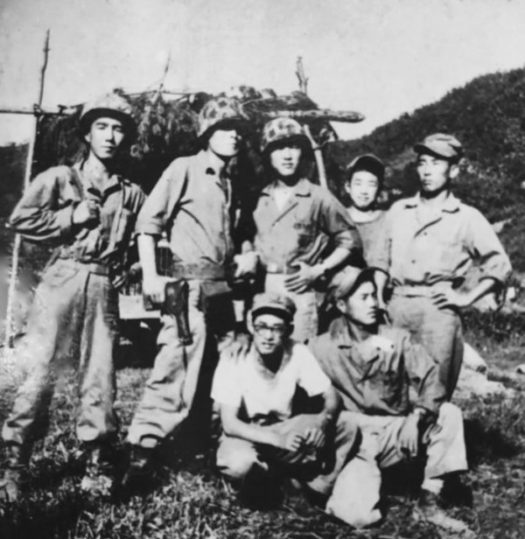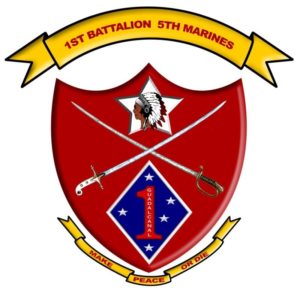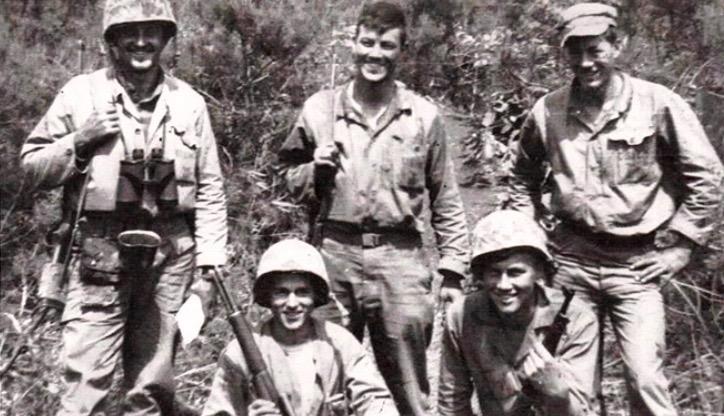Walking in the Boots of a Marine

"I have good memories of my time with the Marines.”
- Johnny Nam, interpreter and guide during the Korean War
He’ll always remember his first week scrubbing pots and pans for the Marines stationed near Yongchon, his hometown. “I thought it might be a good way to learn English, get food, and maybe even earn a little money,” Nam Choong-Il, or “Johnny” as the Marines called him, said in a recent interview. He had no idea what was about to unfold.
From The Kitchen To The Front Lines
The youngest of six children in a family plagued by poverty, Johnny had little hope for the future. “You can’t imagine how poor Korea was,” he recounted. His life, however, was about to change. By the summer of 1953, he would be a different person.
After spending months with the Marines and being recognized for his hard work, quick wit, and ever-improving English skills, Nam went from washing dishes in a field kitchen to being a personal assistant, or “houseboy,” for Lt. Colonel John L. Hopkins, commanding officer of 1st BN, 5th Marines. Hopkins was apparently impressed with the young Korean and allowed him to stay with the Marine infantry regiment even as they moved closer to the front lines. “I had a lot of respect for Col. Hopkins,” Nam remembers. "He was a good man."

Lt. Col. John L. Hopkins, Commanding Officer of 1st Bn, 5th Marines, leads his men in singing the Star Spangled Banner during a memorial service for fallen Marines, June 21, 1951. (PC: US Marine Corps)
Assigned to work with the Marines in A, or "Able," Company, he soon earned their respect and was issued a uniform. "They gave me utilities, web gear, and a rifle," he said. For the remainder of the war, he proudly wore his uniform, even on the rare occasion when he returned to Yongchon on liberty. “I felt like a real Marine,” he said.
Serving on the Front Lines
Nam served with Able Company during some of the bloodiest engagements of the Korean War. He saw men blown apart by Chinese artillery rounds, struck by mortar explosions, and hit by small arms and machine gun fire. It was a nightmare like nothing he had ever imagined.
He quickly learned how to protect himself from enemy artillery barrages. “When you heard the whistling of an incoming artillery round you hit the ground face first - and you hugged the earth.”
"Many Marines were killed from shrapnel,” he remembers. “After one of the worst attacks, I saw a trailer loaded with dead Marines . . . some of them had been my buddies.” The most vivid memory of his time in combat was the day he watched a man scream as his intestines were pushed back into his body and his stomach sewed together. "The corpsmen were so brave," he remembers. "They only thought about helping the Marines."

A Marine rifle platoon moves toward the enemy. June, 1952. (PC: US Marine Corps)
Curse Words, Coffee, and Letters
But there was down time, too. When they weren’t on the front lines fighting the Chinese, the Marines tried to relax. “I learned lots of curse words,” he said with a grin. "They drank lots of coffee,” he remembers, "and some of the Marines used improvised stills to make raisin alcohol."
His fondest memories, however, center on the countless hours he spent listening to Marines talk about home. “I learned so much about America,” he said. "I wanted so badly to go to the United States.” After the war, he dreamed of attending university in the US but couldn't afford it. “My family was so poor. I only thought about my next meal. College in America was out of the question."
Some of Johnny’s closest Marine buddies told their wives and sisters about him. Within months he was getting letters from America. “The letters helped me learn English,” he recalled. “I would write back, practicing my grammar, vocabulary, and spelling.” For over two years, his number one pen pal was “Barbara" from Sacramento, California. He only remembers her first name but still thinks of her often. “I was hoping to meet her after the war,’ he said nostalgically. It never happened.
He also received gifts. The wife of an Akron, Ohio, Marine sent him a winter coat, a Kodak camera, and an Oxford English Dictionary. “The Americans are so generous,” he told me.

Fire Team, A Company, 1st Bn, 5th Marines. From left to right: Mel Oceen, Alabama; Fred Hanle, Clifton, NJ; George Donnelly, Fall River, MA; and William Odion, California. Winter, 1952. (PC: George Donnelly/kwmf.org)
Lucky To Be Alive
Johnny left the Marines in 1953, shortly after the Armistice was signed. “I never saw them again,” he said. Although he didn’t actually fight during his time on the front lines, he was with the Marines every step of the way. “I’m lucky to be alive,” he recounted, shaking his head.
“I used to know every word of the Marine Corps Hymn,” he told me a few weeks ago. “I loved being with the Marines . . . and they liked me,” he proudly said. “I went from a naive high-school boy to a man, and I owe it to the Marines.”
Postscript
Nam Choong-Il, now 84, eventually graduated from university, married, and became a successful businessman. He has traveled to forty countries, including many trips to the United States. He has three children, five grandchildren, and one great-grandchild.
“The Marines were so proud,” he said. “And I’m proud.”
Semper Fi, Johnny!
*Please click here for the Korean version of this blog (translated by Johnny Nam).





That was a great story. Not many people know about these kind stories that happened while th eKorean war was raging on.
Thanks, Doug. Appreciate your enthusiasm for learning about the Korean War! I really respect what you’re doing.
Thank you again for reading the blog and commenting.